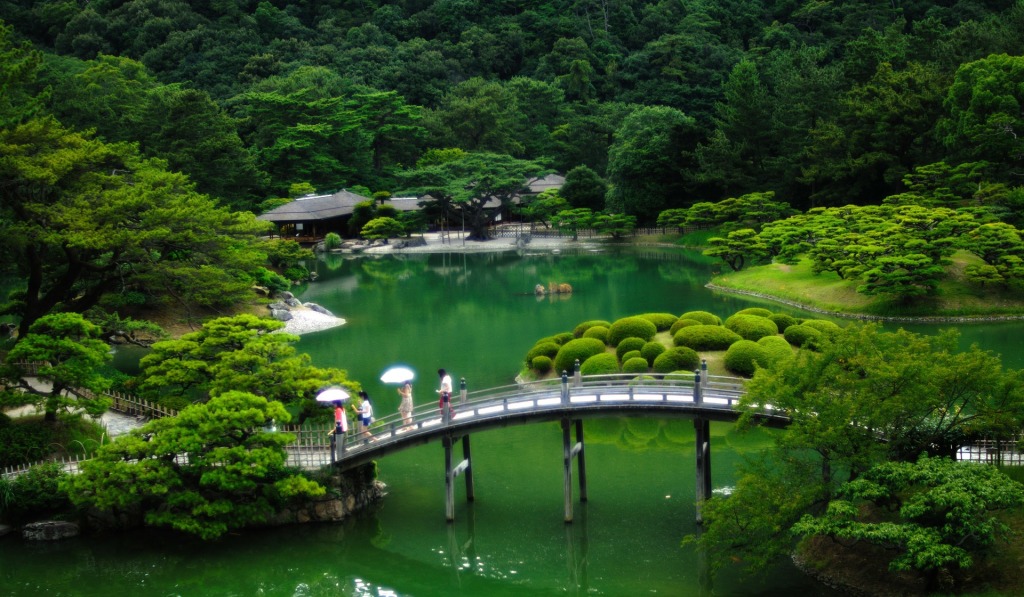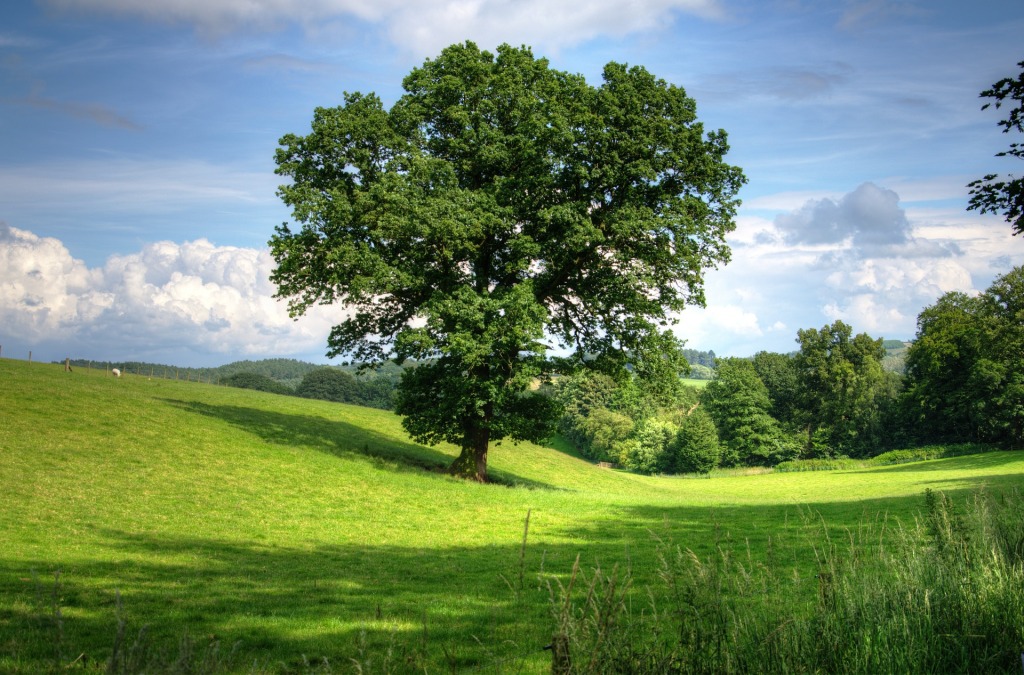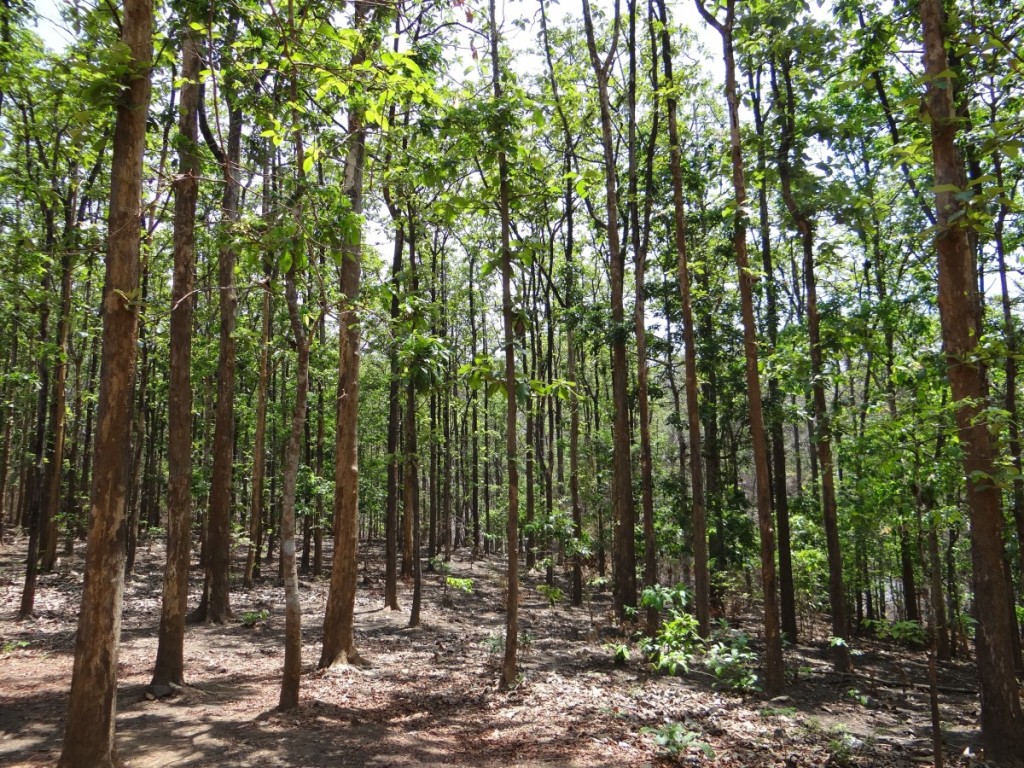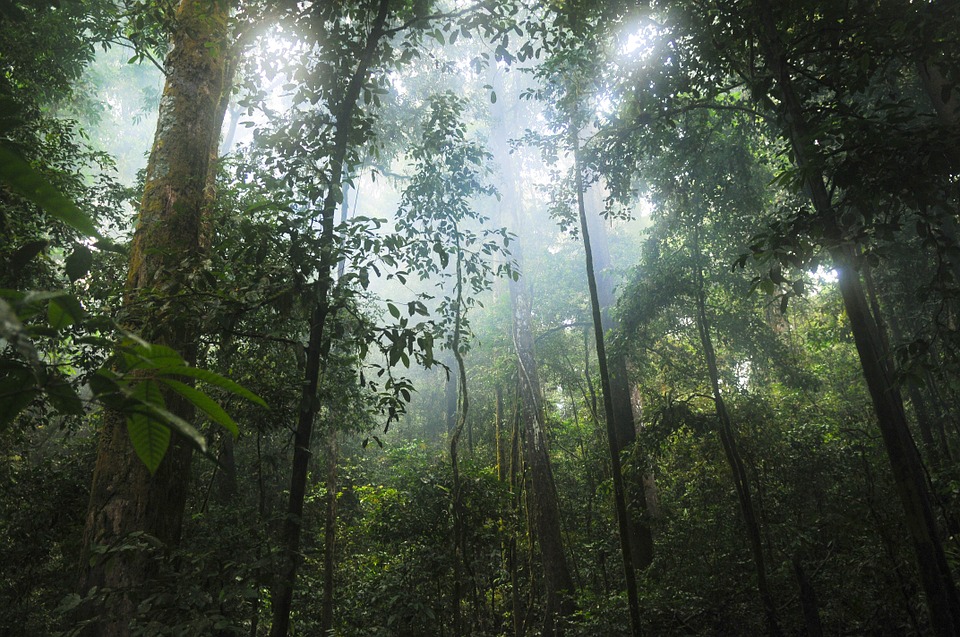These thoughts have been swimming in my brain since my earliest days as an educator, although this year was the first that I actually communicated them to others. Given that these thoughts received a warm response from many of my students, I figured it’s probably time that I wrote them down. They stem from an education conference that I attended somewhere that I can’t quite remember, on a date that I can’t say for sure. It begins with an image like this:

This was how one teacher, who’d just returned from several years in Japan, described the Japanese educational system. Like those bushes on the island, children are clipped and molded and trimmed to fit an image that society imposes upon them, while individuality and creativity are pruned. While I’m not aware if this commentary is truly reflective of schools in Japan, this teacher condemned any pedagogy that turns children into conformist automatons, instead preferring a landscape like this:

A tree like this was held up as the “American” ideal, growing tall and and wide in every direction. This was how our presenter envisioned the U.S. educational system, where children are free to develop in any direction they wish. No limits are placed on their expansion, and the sky’s the limit. Of course, is any tree able to grow infinitely? No, not quite. There’s only so much that one tree might accomplish, because even a tree that’s “free to grow” will eventually exhaust the resources around it. Besides, wood (like bone) is only so strong, and oversized branches can break.
While most teachers nodded their heads and patted themselves on the back over the great job that they’re doing, one fellow educator dared to raise his hand. Looking back, I wish that I’d paid more attention to whom this hand belonged, because I would’ve liked to shake it. What he said has led me on a long journey of discovery, and I find it both relevant to education and our wider society.

If you look at the scene above, you’ll notice that none of these trees look like that one in the field, nor would they be welcomed in a manicured garden. No, this is how trees are actually supposed to look, and this is what that renegade teacher wanted us to see. Trees do not naturally grow in fields, where every obstacle has been cleared; instead they grow as part of a rich, diverse community. The tree in that field, for all of its impressive growth, is actually deformed from the experience. Such a solitary tree is more susceptible to wind damage, and drought, regardless of whether it thinks that it’s more important than all the other plants around. Trees like those are actually suffering–in part because they are so focused on their own growth… without any connections to a wider community.
Now in order to understand this point better, let’s take a look at how a forest truly works.

Image credit: Charlotte Roy, Salsero35, Nefronus on Wikipedia, based on original image in French and licensed through Creative Commons 4.0.
Through the diagram, you’ll notice connections that we don’t normally see; forests are actually supported by vast networks of plant roots and fungi. On the surface, humans might only be aware of the competition for light and space, but that’s not even close to the whole story. Our world can’t be driven by competition alone; we must foster supportive connections that run deep, and which everyone must recognize. Tall trees, no matter how strong and important they think they are, can’t survive without the tiniest fungi. If fungus-killing chemicals are injected into the soil, the tallest trees may die, and unlike self-important humans boosted by their own egos, trees in the forest are fully aware of this interconnected fate. The largest trees care for the smallest amongst them, sharing nutrients with fungi and other plants through these “mycorrhizal” networks. Is this compassion? Possibly. More accurately, it’s an awareness of reality. Trees need other organisms to thrive. Tall trees cannot be the only plants in the forest; they gain their strength from the community. When times are good, they provide nutrients to organisms in their network, and when times are bad, they depend on others to survive. Trees even communicate across these interconnected root systems–if one tree gets attacked by an insect, or gets weakened by disease, other trees will adapt accordingly. Individuals with the most connections are known as “mother trees,” and conditions deteriorate when these keystones are removed. When a road is built, or the community is otherwise fragmented, the entire forest starts dying.

Now allow me to relate this metaphor to my own experience in Panama. I served in the Peace Corps for two years, living in a rural village where landscapes like the one above were common. Tropical forests had been cleared, either for logging or agriculture, and one kind of tree (usually teak) was planted in its place.
What happened? The trees didn’t grow as hoped. Even worse, nothing else knew what to do in these areas. Birds didn’t sing in tree plantations, bugs didn’t buzz; all one could hear was a deathly silence. Thankfully, more recent studies have shown that teak farming can help native species thrive, as long as they are planted together. A forest completely composed of teak will quickly exhaust the nutrients that they all demand, while a mixture of different species can actually help to replenish the soil.
Now… how does this all relate to education? While most school communities surely have their share of ambitious trees, they cannot be the only individuals that we recognize or value. This is particularly resonant after the death of Emile Bruneau, an incredible voice for peace who investigated how we might overcome hatred and division. Test scores and grades cannot be considered the only measures of success, and as an educator myself, I feel compelled to steer students away from constant, unhealthy competition. We must find better ways to help school communities thrive, and shift our focus towards communication and cooperation. All of us must nurture our “forest,” and the “taller” trees need to understand that no student has more value than another, no matter where they get accepted into college or how much money their parents make. If a forest were made of only these plants, no one could thrive, because the same resources would continually be exhausted. When certain students complain about “unfair” admissions practices at elite universities, I remind them that they might just be following the pattern of every other ambitious tree, doing nothing to make themselves distinctive. High achievers across the country take advanced placement classes, play varsity sports, get 4.0 GPAs, and 1500+ on their SATs. If they think that’s what they need to stand out, or that a university should somehow be compelled to accept them based on these criteria alone, they are no different than trees in a plantation, struggling for their spot in the sun. Maybe they even become strangler figs, climbing on others to rob them of opportunities. And what about students without those same grades, athleticism, or standardized test scores (which may be considered controversial)? In many cases, these students are the peacemakers, the activists, the jokers, the artists, the rebels, the writers, and the people who question how our society is run. These students might be equally capable and intelligent, but not as motivated in school. They may also be working until 3:00 AM every night, because their family is under financial strain. They might be struggling with mental health issues, or holding a family together because someone else is suffering. They may even just think that the whole academic route is “b.s.,” but that won’t necessarily hold them back from a career. In any case, as part of a wider society, these are people who have an equal right to exist, and must be acknowledged for their own space in society. By drawing on different resources, they help to enrich our soil.

If the coronavirus pandemic has taught us nothing else, it’s laid bare what makes an “essential worker.” They’re often the people that most hadn’t expected to be so important–aside from doctors and nurses, who were clearly recognized from the start. They are the delivery people, the trash handlers, the meatcutters, the supermarket stockers, the farmers, the electricians, the plumbers, the factory workers, and all those others who helped prevent civilization from collapse. Did they get the best grades in school? Not necessarily. Are they valuable members of the community? There is no doubt. This is why I’m hoping that we might think more about the forest when it comes to society as a whole. The more people with whom we can connect–especially those who are “different”–the greater our chances to become mother trees that enrich our society. Healthy communities can then have impacts in other parts of the world, as the Amazon forest brings rain to food-producing regions in Argentina. In my early days of teaching, I was fortunate to have had the opportunity to accompany a science team that researched this phenomenon (even though most of the links are now broken). What our communities need now aren’t more trees competing for the highest canopy; we need connections that will make our society more resilient, especially now that we’re so consumed with crisis and change.
I, for one, will strive to be a mother tree.
Beautiful message. I especially love the part about the ideal American tree, growing alone in a field. Trees don’t naturally grow that way. My Mom is a retired teacher and she has often said a lot of ideals are untrue. People aren’t being taught facts, they’re being taught mythology.
LikeLike